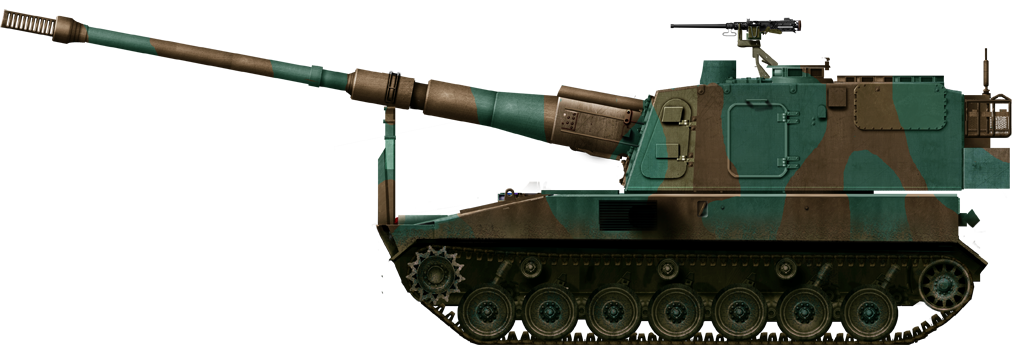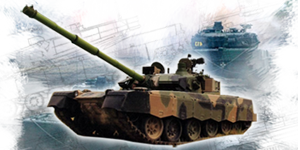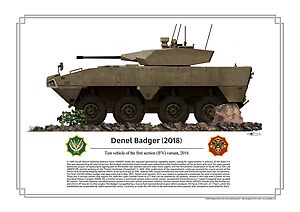Specifications and Development

Type 99 155 mm Self-Propelled Howitzer: Introduced: 1999 (hence "Type 99"). Manufacturer: Mitsubishi Heavy Industries (chassis), Japan Steel Works (gun system). Service Entry: Early 2000s. Status: In active service with the JGSDF
Design
Developement
The Type 99 155 mm Self-Propelled Howitzer is the Japan Ground Self-Defense Force’s (JGSDF) primary modern tracked artillery system, designed to replace the older Type 75 SPH. It was designed to provides mobile, accurate, and long-range indirect fire support for ground forces, especially in defense of Japan’s territory. The Type 75 was exclusive to the Japan Ground Self-Defense Force, based on the Type 74 105 mm self-propelled howitzer developed from 1969, with Mitsubishi Heavy Industries developing the chassis from the Type 73 APC, howitzer and turret designed by Japan Steel Works.
Two prototypes completed in 1971–72 differed by their loading systems. Trials went on by 1973–74, it was accepted for service in October 1975, with 28 rounds on board. By 2001, 201 were reported active. Production stopped in 1988 but parts were still produced until after the end of the cold war. From 1999, they started to be replaced by the Type 99 and by December 2008 still equipped four batallions, the last being decommissioned in 2016
Research and development for a successor to the Type 75 started in 1985. It was agreed it would still have the same 155 mm gun, but the barrel was to be ported to 52 calibers (L52) instead of 30 calibers (L30) as for the Type 75, and assorted to the latest fire-control system. Japan Steel Works became primary contractor, in charge of the main gun and turret. and like for the previous design, Mitsubishi Heavy Industries was in charge of the chassis. The R&D cost was estimated 5 billion yen, when completed in 1992. Tests went on for years, as well as many corrections and modifications untilm greenlighted for production in 1999, hence the name. Production started at the same time, with the first vehicle being delivered to the training division. Next, in the 2000s, replacement of Type-75 units started. However the format of the post-cold war JGSDF meant only 117 (more recent sources 135) were produced instead of 200.
Characteristics
The centerpiece of the design is a Caliber 155 mm L/52 with a barrel Length of 52 calibers, longer than NATO standard L/39, giving greater range or c30 km with a standard shell, and up to 40+ km with rocket-assisted projectiles. The Rate of Fire is around 6–8 rounds per minute (automatic loading system, reducing crew workload and improving sustained fire). Speaking of which the Type 99 is managed by a crew of 4–5, a commander, a driver, a gunner, and 1 or 2 loaders) due to the loading automation.The Japan Steel Works gun fires NATO-compatible 155 mm shells, smoke, HE, and extended-range types. It is provided with an integrated fire control system allowing for fast targeting, including Multiple Round Simultaneous Impact (MRSI) capability. The fire Control includes a digital fire-control system with GPS, INS, and ballistic computer. The secondary armament is a Browning M2HB on the pintle mount around the commander's cupola.
The Type 99 is powered bt a Mitsubishi 600 hp diesel engine for a top speed of c50 km/h (road) and the chassis is a modified stretched out version of the Type 89 IFV for commonality. The tracked chassis gives it all-terrain capability ideal for Japan’s mountainous and rugged terrain. It was found more desirable than a wheeled self propelled gun as we often see today. Like the original Type 89 it shared all its driving components, with the engine also placed forward, front sprockets, rear idlers but an extra axle, with seven roadsheels per side, suspended by torsion bars. The 6SY31WA 6-cylinder diesel procired a top speed of 50 kph, and range of 300 km (185 miles). Due to its weight, the Type 99 is unable to swim, but can cross up to one meter water without preparation.
As for protection, the Type 99 is a rear echelon vehicle, not supposed to be engaged by heavy armour, so almunium allow protection is provided against small arms and shell splinters. This is completed by a full BNC collective protection with overpressure and full sealing, but also automatic fire extinguishers in the engine and combat compartments. There are also blow-out doors in the ammunition magazine and thick fireproof bulkhead to protect the crew from the storage section of the bustle. As for close defence, apart the 12.7 mm HMG, there are the crew's own pistols and small arms.
Type 99 SPH specifications | |
| Dimensions (L-w-H) | 11.3 x 3.2 x 4.3m oa |
| Weight | 40 tons fully loaded |
| Propulsion | Mitsubishi 6SY31WA 6-cyl. diesel 600 bhp |
| Top speed | 49.6 km/h |
| Suspensions | Torsion bar |
| Range | 300 km (185 mi) |
| Armament | 155 mm/L52 (6.1 in) 360°, 6 rpm, 12.7 mm M-2HB HMG |
| Armor | Aluminum Alloy |
| Crew | 4 |
| Production | 135 (117 active) |
The Type 99 in service

Operational Role: The Type 99 provides indirect fire support to mechanized infantry and tank units, it is a key part of Japan’s island defense doctrine, offering rapid, mobile artillery response. It is integrated into combined arms operations with forward observers and UAVs. An artillery unit comprises each several support vehicles designed at the same time, the Type 99 Ammunition Resupply Vehicle. It shared the extact shame chassis with the Type 99 but instead of a turret possesses a large casemate to store up to 90 shells, supporting sustained artillery operations by resupplying ammunition in the field.
The Type 99 was never exported and is currently in service with the following units:
- Fuji School(Combined Training)Brigade
- JGSDF Artillery School Unit
- Ordnance School
- Northern Army:
- JGSDF 2nd Division, 2nd Artillery Regiment (Mechanized)
- 5th Brigade, 5th Artillery Unit
- 7th Division, 7th Artillery Regiment (Mechanized)
- 11th Brigade and 11th Artillery Unit (Mechanized).
- Northern Army Combined Brigade: 1st Sergeant Training Unit
Gallery

Author's rendition





Type 99 SPH links & resources
The Type 99 on Wikipediacombat1.sakura.ne.jp
mod.go.jp
weaponsystems.net
odin.tradoc.army.mil
ja.wikipedia.org
mod.go.jp
commons.wikimedia.org
Video










































